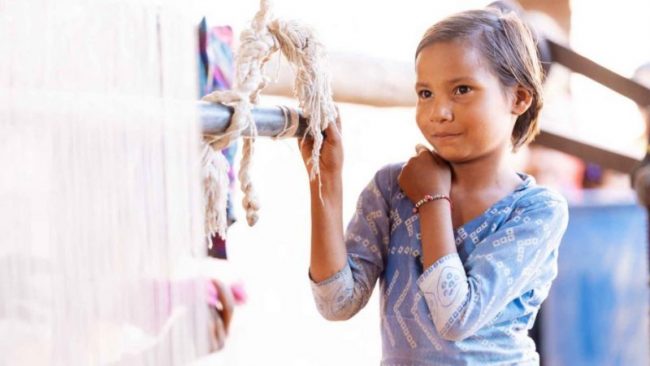Cheap prices come at a terrible cost to some
Swathes of the fashion industry rely on child labor to keep up with the demands of retailers looking for new, cheaper products delivered to stores every other week. In the increasing quest for lower costs, brands divide their orders across several suppliers, making it difficult to keep long-lasting relationships. When you combine competition and unreliable order flow, suppliers force their workers to produce even more for lower pay, and then outsource to informal sub-contractors with even worse conditions when demand gets too high. The result: child laborers working on hard tasks like repetitive beading, dyeing or lifting heavy boxes and packaging. The impact and true costs are not passed onto consumers, but rather carried in full by those young workers.
South Asia is booming – not in a good way
South Asia is particularly notorious for child labor in supply chains. The region is home to the largest number of the world’s child laborers, some 78 million, or 9.3% of its total child population (ILO, 2013). Globally, the demand of consumers has resulted in 152 million children working at an age far too young or in unacceptable working conditions (ILO, 2019). Children from ethnic minorities such as the ‘Dalit Muslim children’ in South Asia are pushed into these conditions. Their work ends up in the supply chains of the prominent brands found on the shelves of stores in cities everywhere. Unfortunately, the corporate compliance and auditing programs largely fail to help child labor victims, because they often don’t go past the first tier of suppliers. The most difficult, poorly paid work done on jeans found in the United States or Europe is in the lower tiers of the supply chain. The third party and corporate compliance programs we read about and see promoted is often just comprised of annual preannounced inspections. It’s inadequate to monitor these complex – often hidden – supply chains, and auditors rarely receive specialist training in child and forced labor. This means almost none of these programs offer remedy for victims when cases are identified. Thus, compounding the problem even further and offering no exit for those working in brutal conditions.
Read rest of the article on UBS Stories

